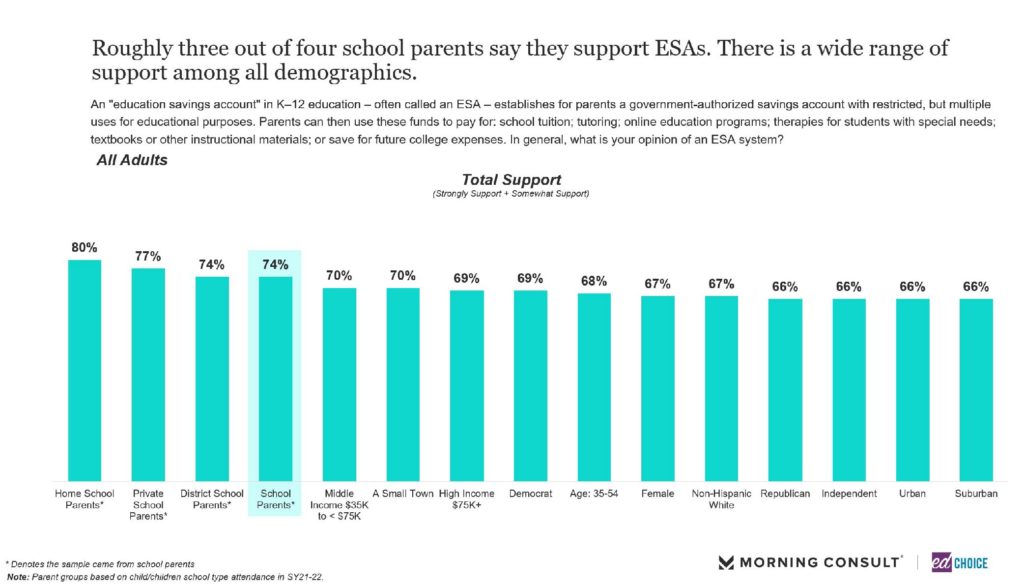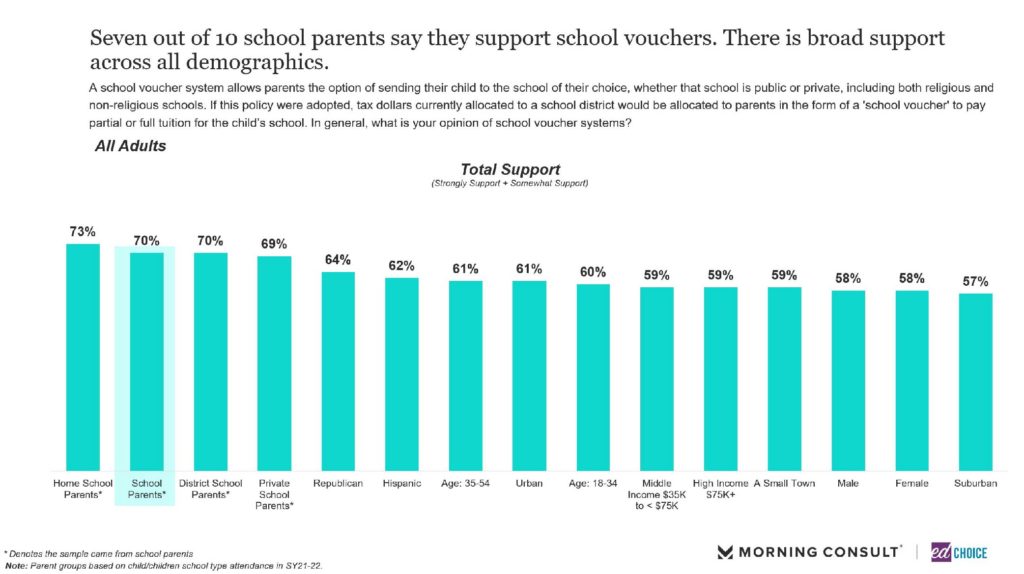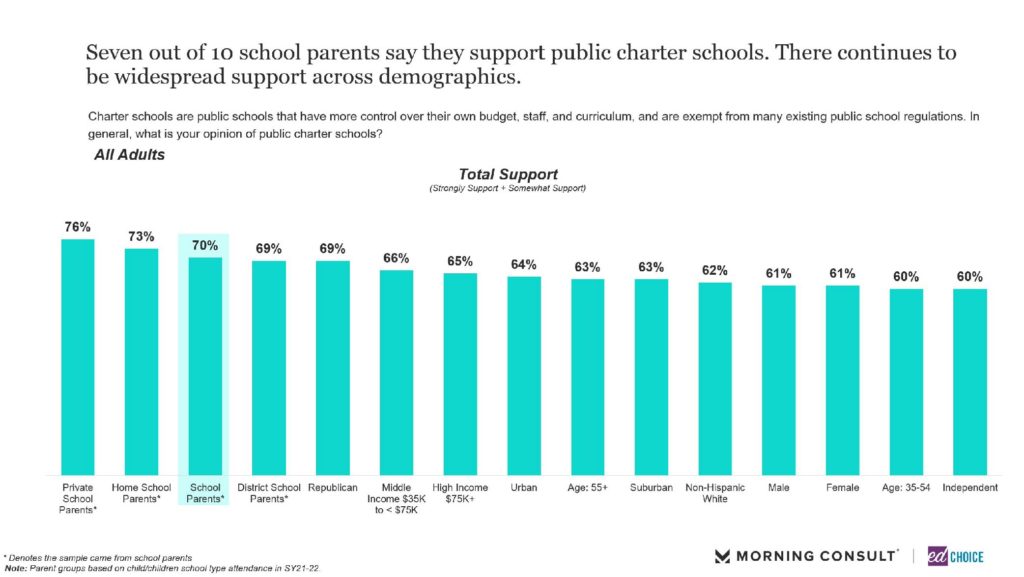EdChoice Public Opinion Tracker: Top Takeaways September 2021
Schools across the country continue to make difficult decisions about how to keep the classroom safe while providing quality education for children. To that end, many states are presenting schools with policy options. In Indiana, for example, schools are no longer ordered to require that children quarantine when exposed to classmates or teachers who test positive for COVID-19—if that school enforces a universal masking policy. Ohio’s guidelines are similar.
A brief foray online will find some parents who think such a policy is too overbearing and others concerned it is not cautious enough. For a fuller picture of Americans’ perceptions of the pandemic, schools, and the ever-evolving relationship between the two, we survey a nationally representative sample of American adults every month. From September 10-20, we collected responses from 2,200 adults aged 18 and older. With additional sampling, we received 1,207 responses from current school parents, including an oversampling of 700 school parents. That approach allows us to report more reliable information about parents’ opinions by demographic.
In a nutshell: We saw a decline in the percent of respondents who think K-12 education is on the right track; that decline was mirrored among parents, though they remain more optimistic than the general public. Parents are reporting increased comfort sending their kids back to school in person, and more than half of adults support mandatory masking for students, teachers and staff. This month, we asked parents for the first time about their experiences with COVID quarantines. On average, parents said their children have been quarantined 2.54 times, with low-income children quarantining substantially more than middle- or high-income children and Black and Hispanic children quarantining more than their white peers. Support for school choice policies remains high; nearly three-fourths of parents support education savings accounts or ESAs. Parents remain interested in learning pods predominantly as a supplement to their child’s regular schooling.
Here are some of our key takeaways from this month’s monthly opinion tracker:
1. The share of people who believe K-12 education is heading in the “right direction” decreased slightly in September. About a third of adults think that K-12 education on the state and local levels is generally going in the right direction, down from 41 percent in June. Positive responses about the direction of K-12 education nationally also are down, dropping from 33 percent of adults in June to 27 percent in September.
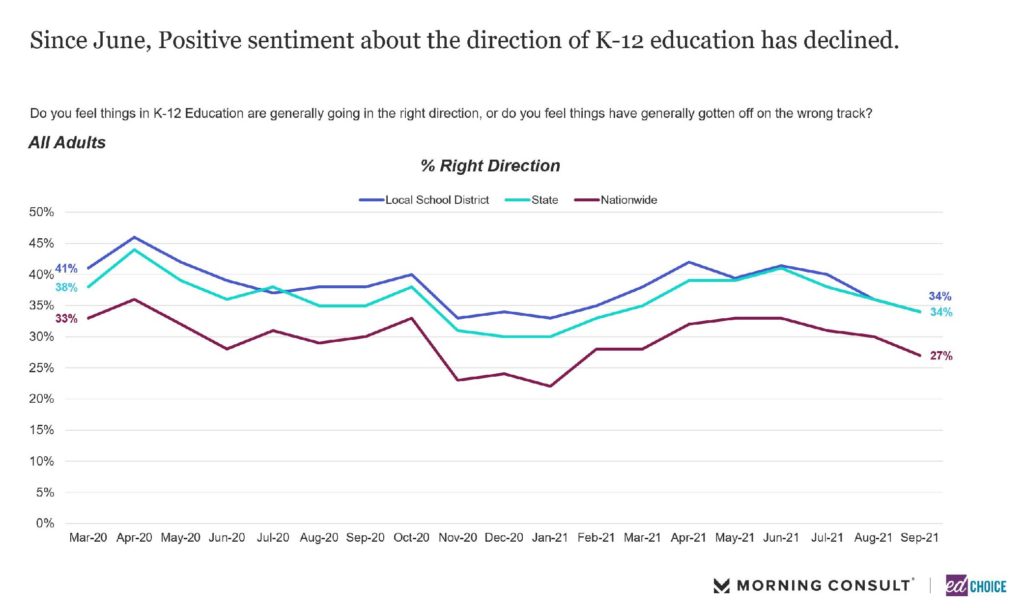
Parents of K-12 children remain more positive about the direction of education than the general public, though their positivity also declined in September, even if less substantially than among all adults.
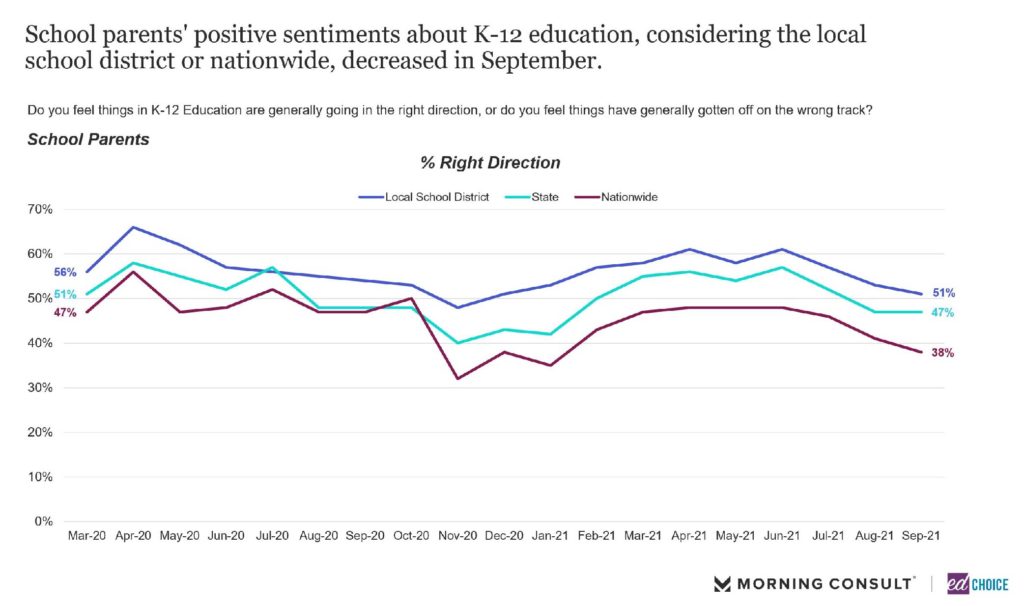
2. Signs of COVID-19 frustrations saw slight upticks. About a third of adults said that the pandemic was “very disruptive” to their community in September, rising for the second consecutive month. Perception of disruptiveness is slightly lower than it was back in the spring.
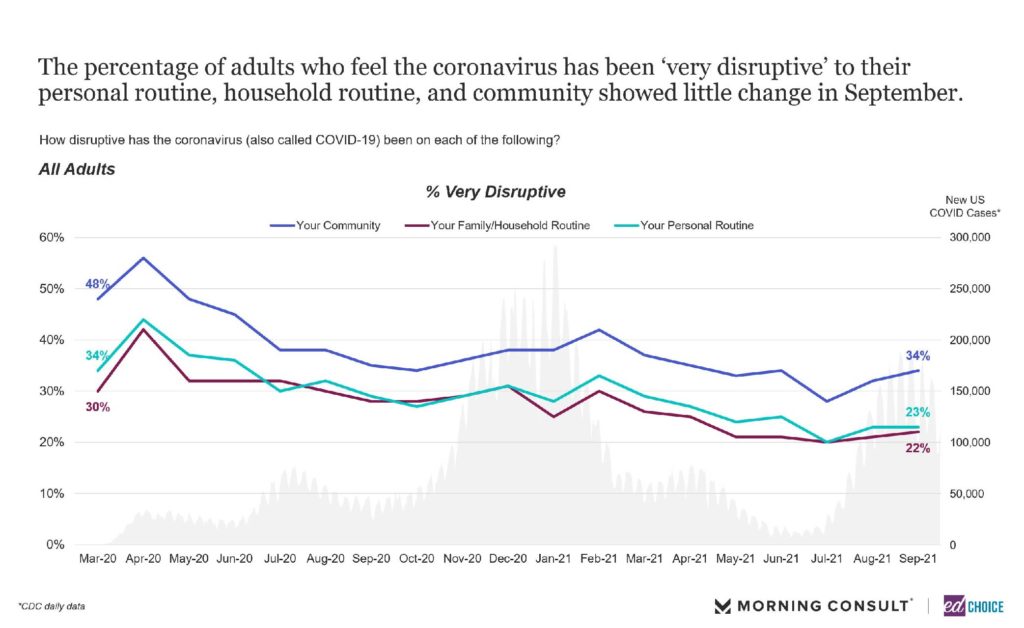
Respondents rated schools’ COVID-19 responses lower in September compared to August. The net rating for schools declined four percentage points; for school districts, the decline was five points.
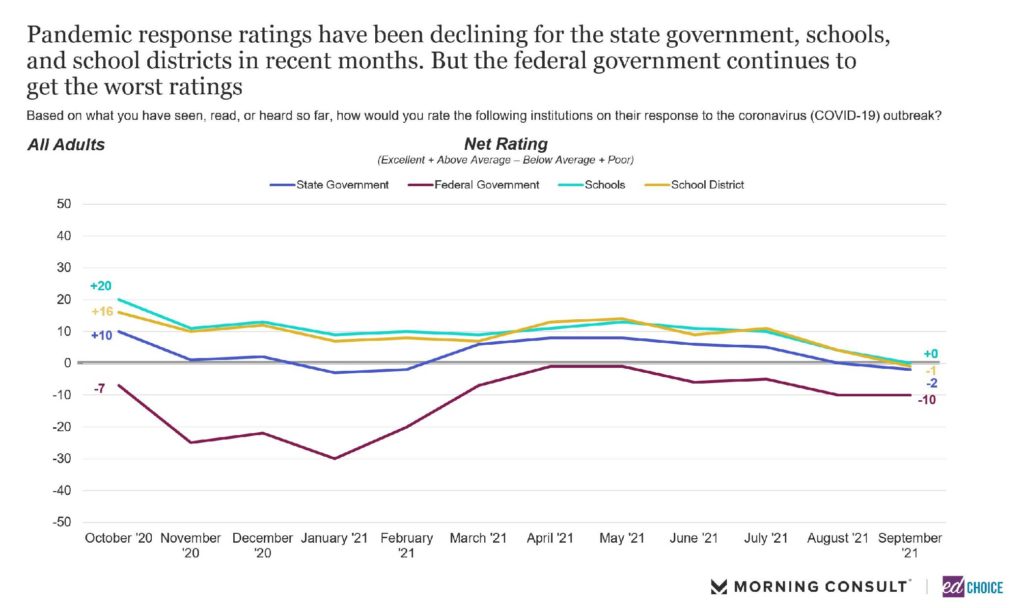
Following a trend we have seen since the beginning of the pandemic, the public remains significantly more positive about how local small businesses have responded to the crisis compared to other institutions, with the federal government earning the lowest rating.
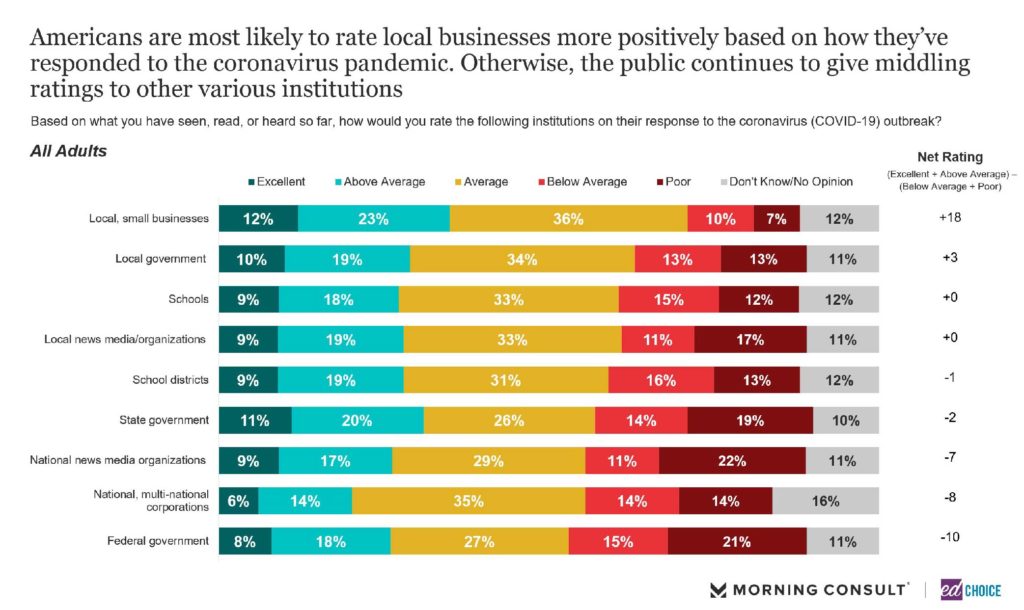
3. Preferences for in-person schooling and mask policies rose in September. After two consecutive months of decline, the share of parents at least somewhat comfortable with classroom-based education increased six percentage points, bringing the total up to 63 percent.
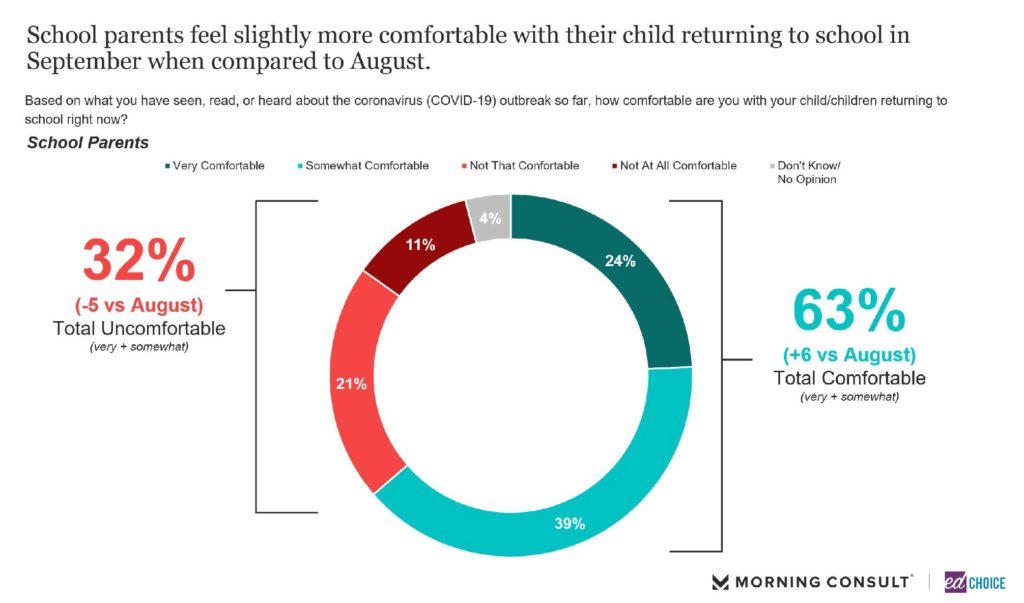
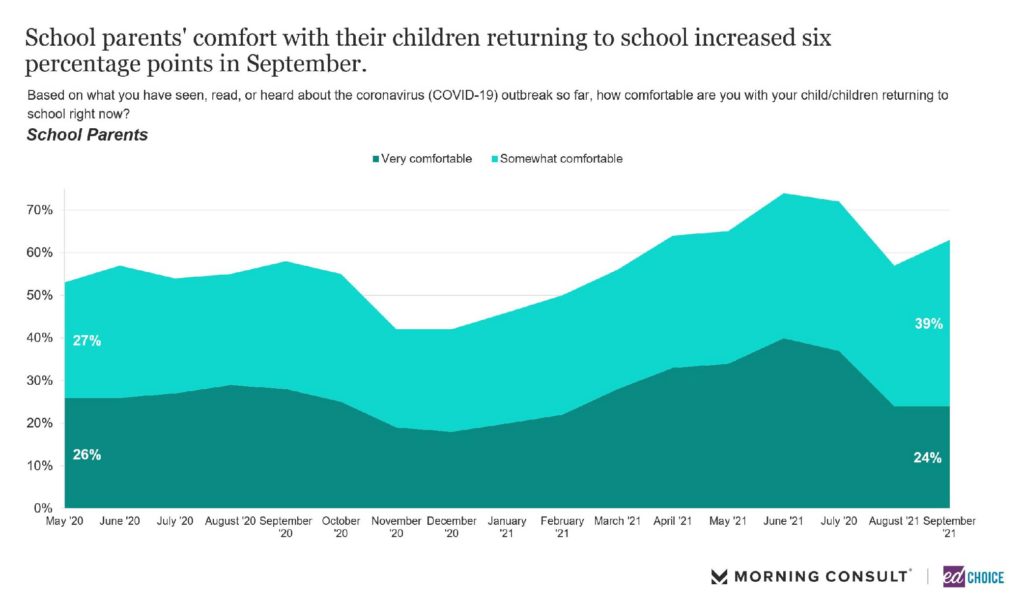
At least half of adults support mandatory masking policies for every education-related group we identified. Respondents were most likely to say teachers working at K-12 schools should be required to wear masks, at 56 percent, and students aged 5-11 were the group for which they were least likely to support mask mandates, at 50 percent. Support for mandatory masks for these groups respectively rose six and seven percentage points since August.
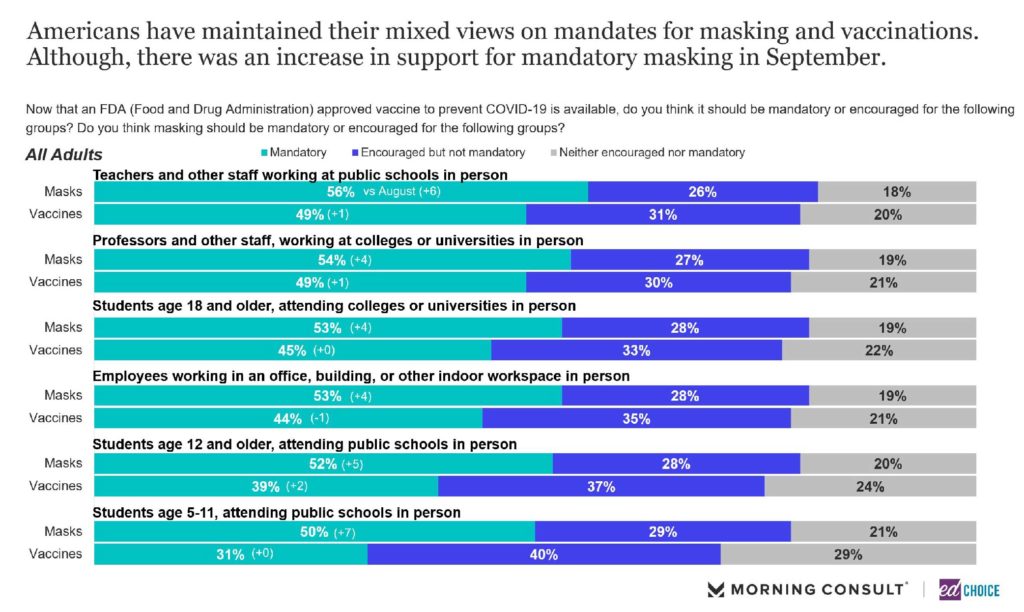
4. About a fifth of parents who have delayed kindergarten for their children did so due to the pandemic. Given the shutdowns and other COVID-19 restrictions schools have implemented in recent school years, there has been much speculation about whether parents would “redshirt” their children from kindergarten. We asked K-12 parents—both current and former—whether they have delayed enrollment of kindergarten for their children. Among former school parents (i.e. parents with children only 18 and older), six percent said they have delayed kindergarten enrollment for their children. Incidentally, this percentage roughly matches historical redshirting rates. Current school parents, however, report twice the rate, at 12 percent. To clarify, that rate expresses redshirting responses among all current school parents, not just those with children currently in kindergarten and first grade or some other subset.
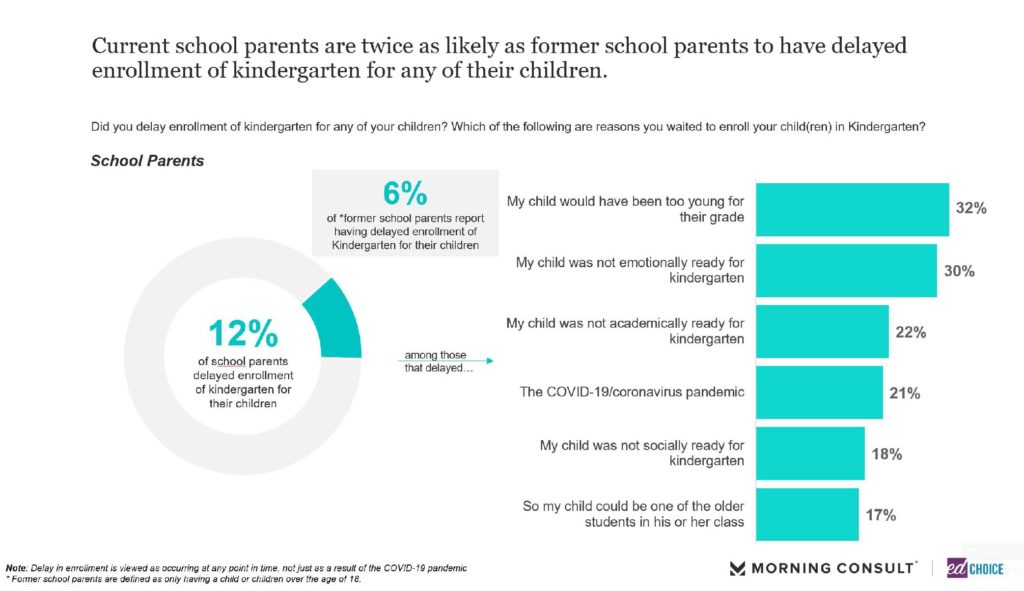
5. If a child has had to quarantine from school because of COVID-19, they likely have quarantined multiple times. Among school parents, 43 percent said they have had children quarantined due to COVID-19. We asked these parents how many times their children have quarantined. On average, these parents said their children have been quarantined 2.54 times. The number of times a child has quarantined appears to be related to certain demographics. For example, low-income children appear to have quarantined substantially more often than middle- or high-income children, and Black and Hispanic children seem to have quarantined more than their white peers. We also see variation by community type. Among those parents who have quarantined a child, those living in small towns and rural areas have done so nearly twice as often as suburbanites.
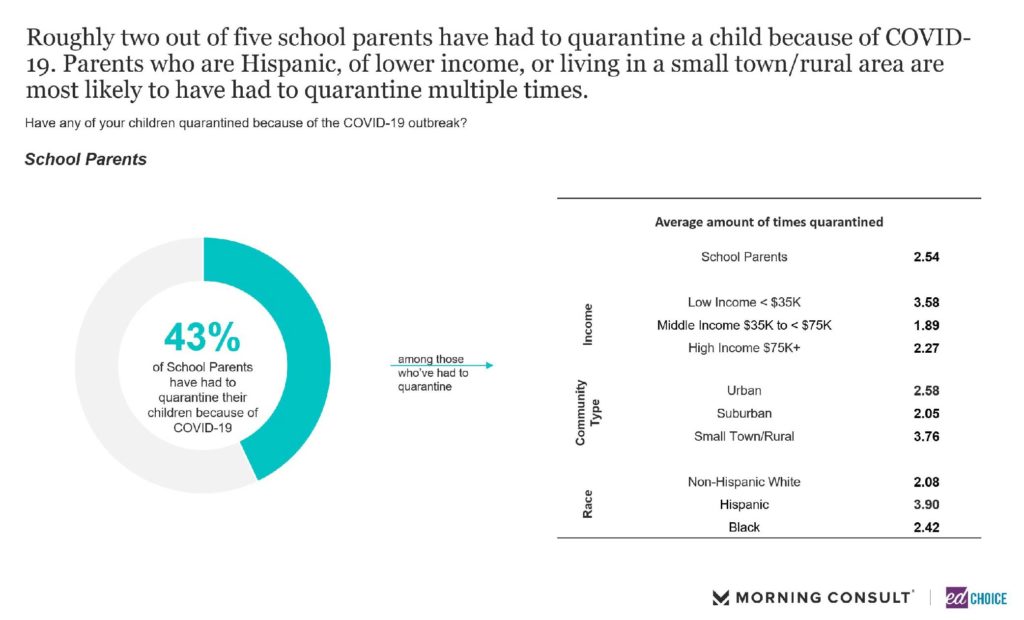
6. Interest in learning pods remains unchanged, but the nature of that interest has shifted. For the third consecutive month, 34 percent of parents have joined or are interested in joining a learning pod. As in August, about 62 percent of those parents are not yet in a pod but looking to form or join one. However, parents participating in learning pods were nine points more likely to say they are using pods as a supplement to regular schooling rather than a replacement. However, the parents who are not in but looking to form or join a pod were five points more likely to want to use pods as a substitute for regular schooling.
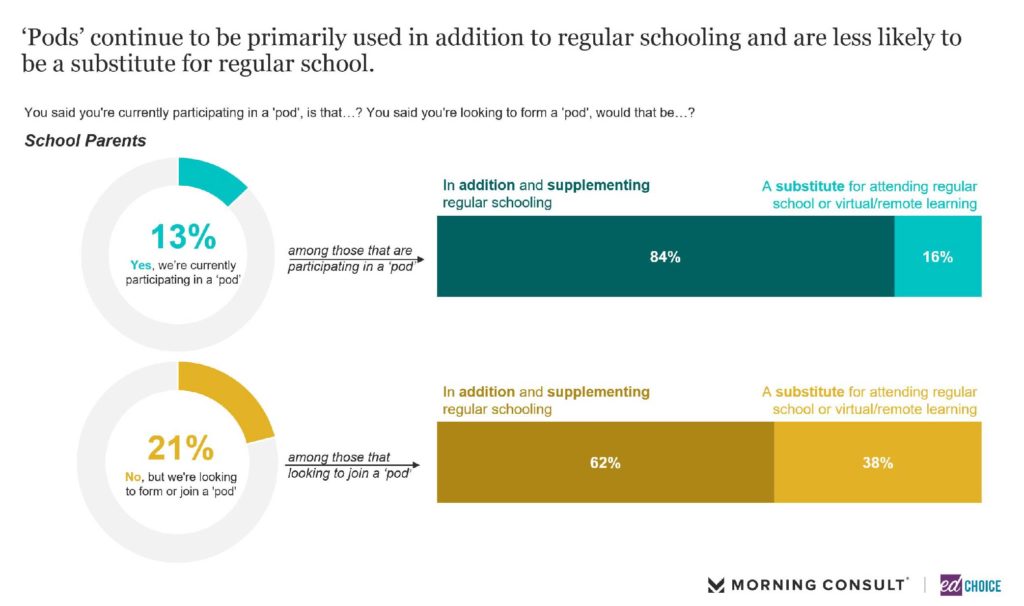
The amount of money parents are willing to pay to participate in a learning pod declined to $360 per child per month, down $48. This marks the fifth consecutive month parents’ willingness to pay for learning pods has declined after peaking at $592 per child per month in April.
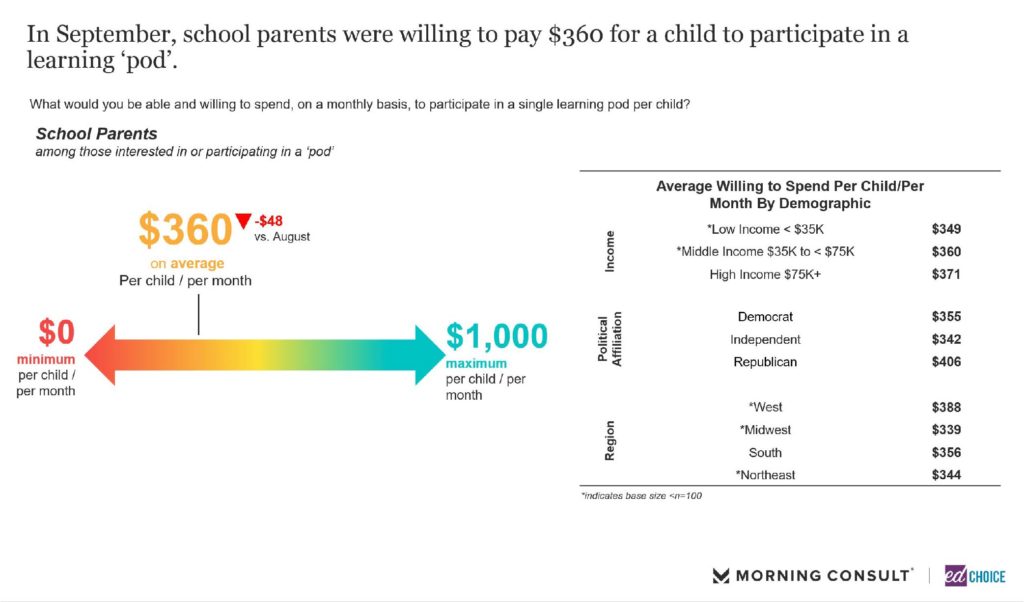
7. Support for three major school choice policies remains high. Support for ESAs, school vouchers, and charter schools is generally unchanged from August. Among all adults who have read a description of the policy, support is 65 percent for ESAs, 58 percent for vouchers, and 61 percent for charter schools.
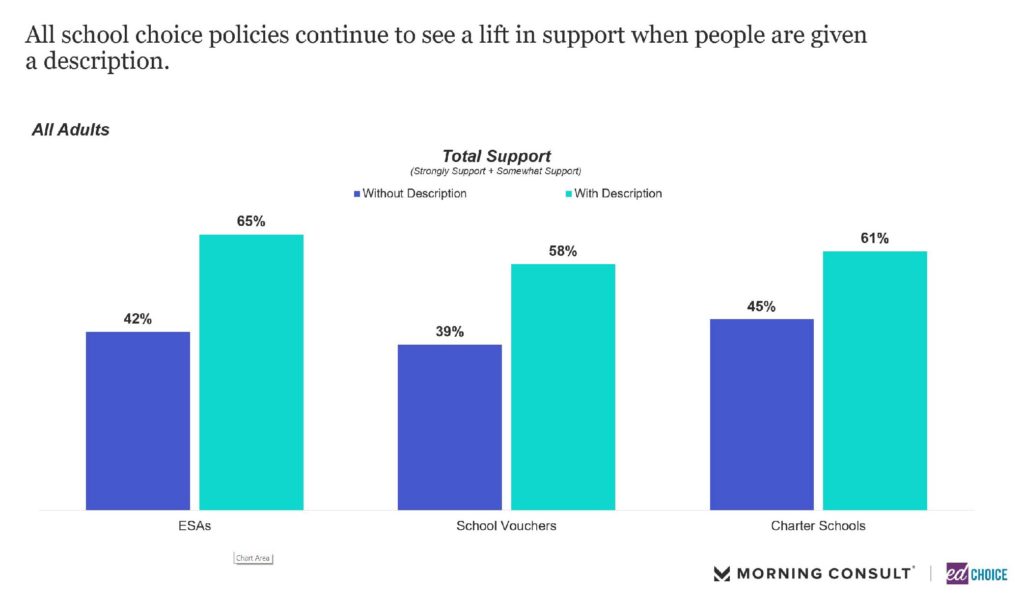
School parents are especially favorable toward school choice policies, with ESAs receiving 74 percent support, vouchers 70 percent, and charter schools 70 percent. ESAs are especially popular among people from small towns, among those who identify as Democrats, or middle-income earners. Aside from specific parent subgroups, Republicans and Hispanics tend to be the most favorable toward vouchers. Republicans, high-income earners, and urbanites were particularly favorable toward charter schools in September.
